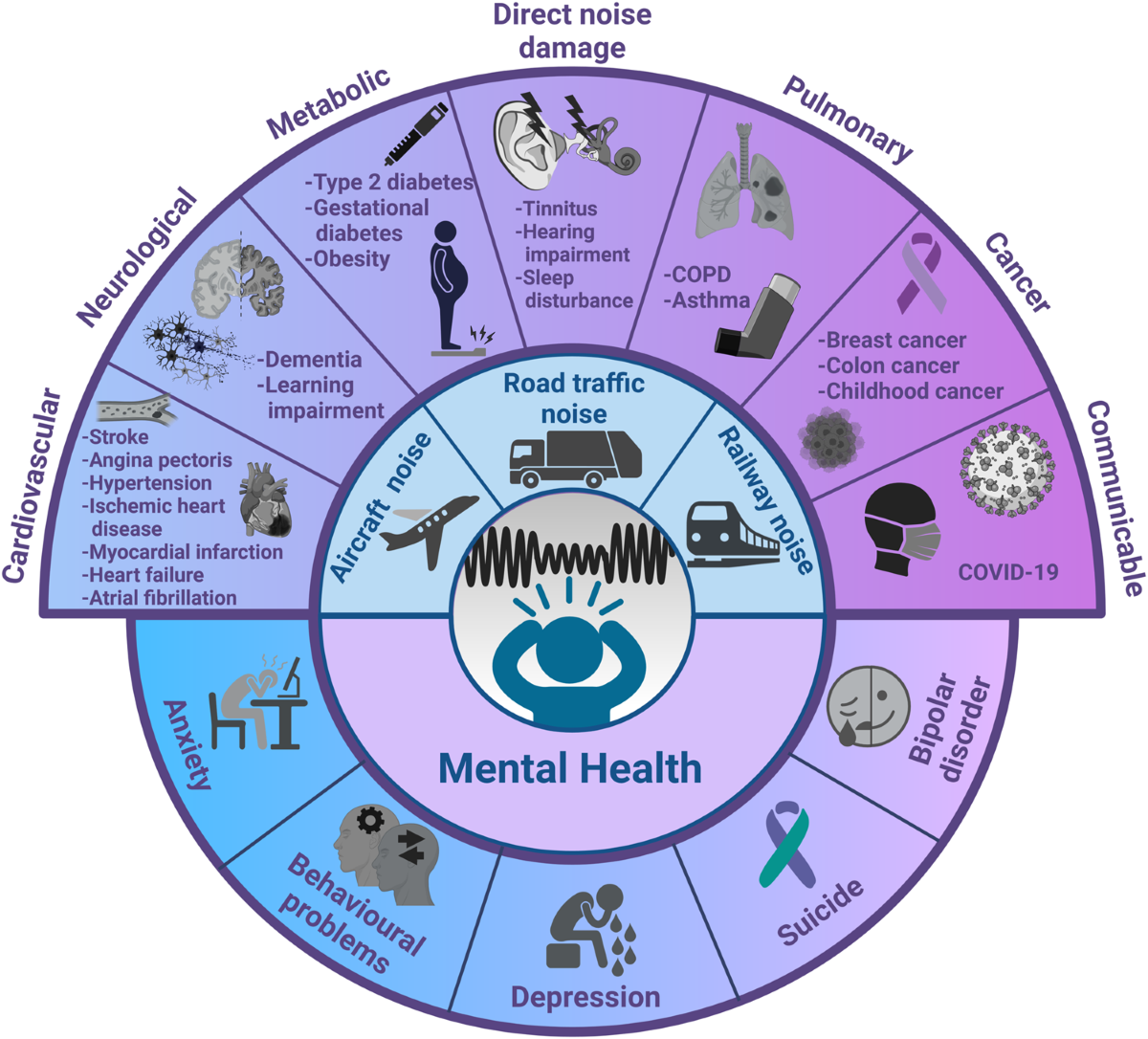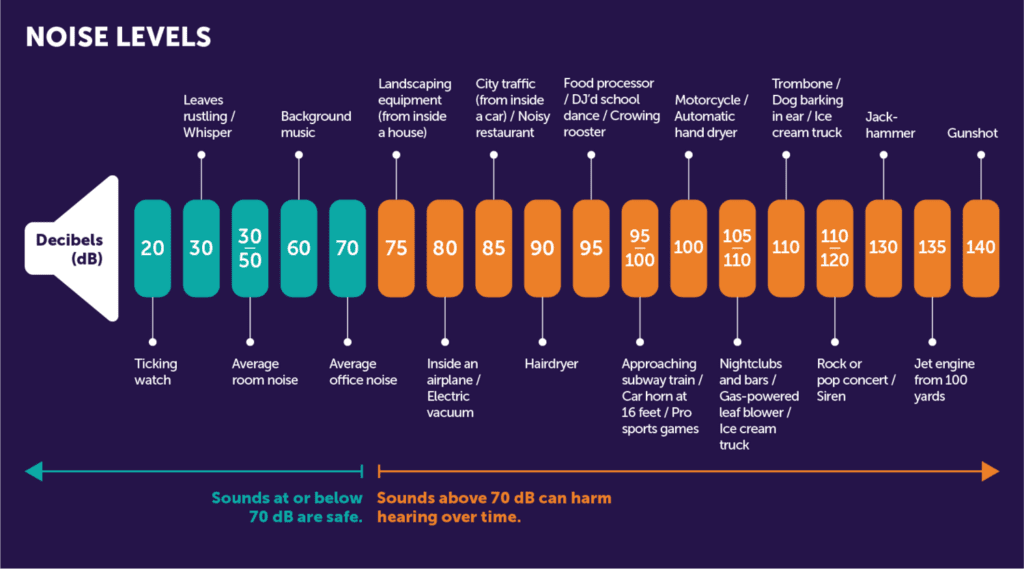Introduction
In our increasingly urbanized and industrialized world, humans are constantly interacting with their environment in ways that shape their cognition, behaviour, and emotional well-being. One of the most critical, yet often underestimated, aspects of this interaction is environmental stress. This type of stress arises when external environmental demands exceed an individual’s adaptive capacity, triggering a cascade of psychological and physiological responses. Among the many environmental stressors, noise pollution stands out as one of the most pervasive and impactful, particularly in urban settings.
Read More- Definition and Scope of Environmental Psychology
Understanding Environmental Stress
Environmental stress is not merely a psychological phenomenon; it is a transactional process where the individual and environment continuously influence each other (Gifford et al., 2010). Chronic exposure to stress-inducing environmental conditions—such as noise, pollution, overcrowding, and unsafe housing—can impair multiple domains of functioning, including executive functions, emotional regulation, and social interactions.

Effect of Noise on Stress
Physiologically, environmental stress activates the hypothalamic-pituitary-adrenal (HPA) axis, leading to the release of stress hormones like cortisol. Prolonged elevation of these hormones contributes to cognitive fatigue, immune system suppression, and increased risk of chronic illnesses (Evans & Cohen, 2004).
Noise as an Environmental Stressor
Noise pollution is one of the most studied and impactful environmental stressors. It is defined as unwanted or harmful sound that disrupts normal functioning. Common sources include traffic, industrial activity, construction, and aircraft. Unlike other stressors, noise is often inescapable, especially in densely populated urban areas.

Noise and Mental Health
Noise not only irritates and distracts but also interferes with communication, sleep, and concentration. Research has demonstrated a strong correlation between long-term noise exposure and a variety of health problems, including:
- Cognitive impairments in children- For example, children exposed to chronic aircraft noise showed deficits in reading comprehension and memory performance (Clark, Head, & Stansfeld, 2012).
- Sleep disturbances- Night-time noise is linked with poor sleep quality, which impairs cognitive processing and emotional resilience (Basner et al., 2014).
- Cardiovascular effects- Chronic exposure to noise can increase blood pressure and the risk of hypertension.
- Mental health decline- Ongoing noise exposure is associated with anxiety, irritability, and even depression in vulnerable populations.
Noise and Cognitive Functioning
The cognitive load theory posits that noise consumes attentional resources, reducing the capacity available for processing complex tasks. This explains why students in noisy classrooms or homes have more difficulty concentrating, leading to lower academic achievement.

Noise Pollution
In one pivotal study, Evans (2001) demonstrated that children living in noisy urban neighborhoods exhibited learned helplessness, a condition where they stopped attempting to exert control in challenging tasks due to consistent failure and distraction.
Mitigation Strategies and Policy Recommendations
To minimize the effects of environmental noise, interdisciplinary approaches are necessary. These may include:
- Urban Planning Solutions- Designing residential areas away from highways and flight paths, and incorporating green buffers (e.g., trees, parks) to absorb sound.
- School Design- Improving acoustic insulation in schools and using soundproof windows can protect children’s learning environments.
- Policy and Regulation
Government agencies can enforce noise ordinances and promote community noise mapping to identify and mitigate hotspots. - Public Awareness Campaigns
Educating the public on the effects of noise and promoting quieter practices in daily life.
Conclusion
Environmental stress, especially from persistent noise, has profound implications for both mental and physical health. Understanding these impacts not only informs personal decisions but also guides policymakers, educators, and urban developers in creating healthier environments. By taking proactive steps to reduce noise exposure, we can foster cognitive resilience, emotional stability, and an overall improvement in life quality.
References
Basner, M., et al. (2014). Auditory and non-auditory effects of noise on health. The Lancet, 383(9925), 1325–1332.
Clark, C., Head, J., & Stansfeld, S. A. (2012). Longitudinal effects of aircraft noise on children’s cognition. Journal of Environmental Psychology, 32(4), 352–360.
Evans, G. W. (2001). Environmental stress and health. Handbook of Health Psychology, 365–385.
Evans, G. W., & Cohen, S. (2004). Environmental stress. Encyclopedia of Applied Psychology, 1, 631–638.
Evans, G. W., & Schamberg, M. A. (2009). Childhood poverty, chronic stress, and adult working memory. PNAS, 106(16), 6545–6549.
World Health Organization (WHO). (2018). Environmental noise guidelines for the European region.
Subscribe to Careershodh
Get the latest updates and insights.
Join 16,594 other subscribers!
Niwlikar, B. A. (2025, April 24). Environmental Stress and 4 Important Ways Noise Affects Us. Careershodh. https://www.careershodh.com/environmental-stress-noise/
